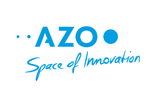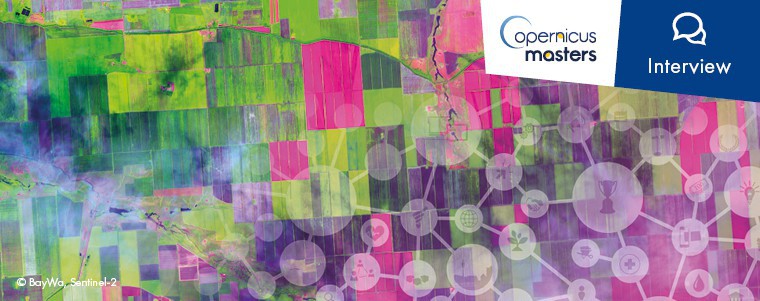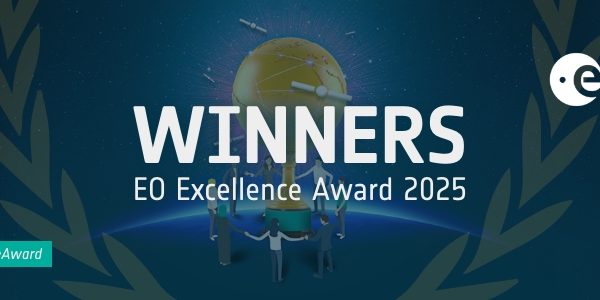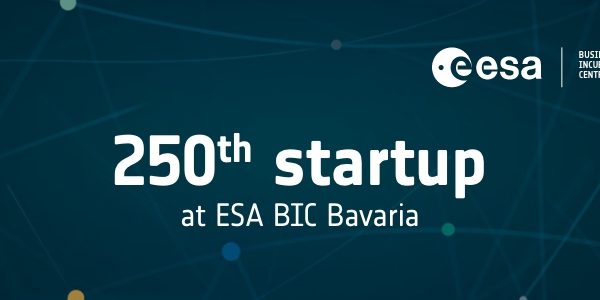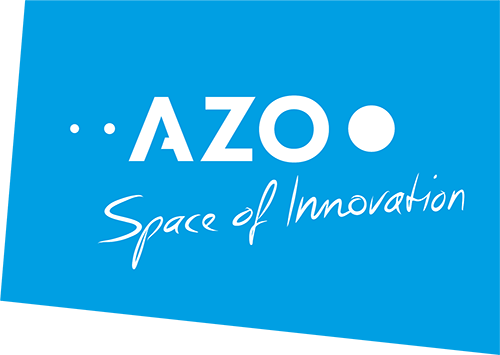As the global population continues to grow, so does the demand for agricultural products. To continue feeding the world without damaging the environment is one of the greatest challenges faced by society. It can only be achieved by increasing the efficiency and sustainability of agricultural production – in brief: Smart Farming.
BayWa is a group with worldwide operations in the core competencies of trading, logistics and supplementary services. Its three operating segments are comprised of agriculture, energy and building materials as well as innovation & digitalisation development.
As a global player and leading specialist for digital farming, BayWa is now on-board Europe’s largest innovation platform dedicated to Earth observation (EO) – the Copernicus Masters.
BayWa invites submissions that tackle the challenges mentioned above by combining satellite data with other data sources in an innovative and commercially viable way. The driving force for the BayWa Smart Farming Challenge of the Copernicus Masters is digital farming supported by the power of precise Earth observation (EO) data.
Digital Farming is geared towards the development and marketing of digital solutions for agriculture. Such solutions open up entirely new opportunities for the agricultural sector. Today, BayWa offers attractive satellite and model-based solutions for agricultural purposes. On top of that. BayWa’s high degree of acceptance and experience as a systems service provider allows them to currently offer a wide range of innovative services.
Read more about BayWa’s mission, their Smart Farming Challenge in the Copernicus Masters, and why participants should submit their innovative Smart Farming ideas. Jörg Migende (JM), Chief Digital Officer of BayWa, is interviewed by Florentyna Smith (FS), Project Manager of the Copernicus Masters.
FS: In operation for close to 100 years, BayWa has a long history of successful activities in agriculture. Could you give us an overview of BayWa’s agricultural activities, both traditional and what you are looking to in the future?
JM: Since BayWa’s founding in 1923, the term “modern agriculture” has played a pivotal role for the business. In the ’20s, BayWa was counted among the pioneers of agricultural mechanisation, providing machines and maintenance services as well as so-called “instructional demonstrations” explaining the various advantages of agricultural machinery, namely: Easier work, less hours and larger harvest yields. Almost one hundred years later, agriculture’s next evolutionary leap comes in the form of digitalisation. For their customers, BayWa wishes to continue pioneering on the digital front, by discerning innovations early on, getting involved in their development and actively promoting their practical use in agriculture. The stated goal is to have every agricultural operation benefit from digitalisation regardless of size.
FS: With so much digital information currently being generated to improve agricultural operations, it’s becoming almost impossible for farmers to ignore. What is BayWa currently doing in the digital farming space?
JM: BayWa aims to be the market leader in digital farming – not only in Germany, but in all of Europe. The groundwork was laid in 2015 with BayWa’s acquisition of the FarmFacts GmbH and the initial steps in the development of NEXT Farming, a Farm Management System. NEXT Farming is web-based, modular in design and, most importantly, manufacturer-independent. This way, our software provides every key function to get every farmer started with digital farming. Because: The software’s modular design lowers the investment cost; farmers only buy the modules they need. Farm reality, with its multitude of machines all made by different makers, is reflected in the software’s manufacturer-independence. Together with six leading manufacturers of agricultural technology, FarmFacts, for example, is currently developing the software’s “NEXT Machine Management” module, a sort of software standard and data hub which can process all data generated by farming machines and devices regardless of manufacturer. This overcomes one of the most significant obstacles to digital agriculture: machine, device and software compatibility.
FS: NEXT Farming also uses Earth observation (EO) data to bring additional insights for farmers, correct? How have you gone about this and what do you use the satellite data for?
JM: In 2017 we secured valuable know-how by obtaining a majority stake in the Vista GmbH in Munich. Vista specialises in satellite remote sensing and its utilisation and practical applications for agricultural operations, among other things. Vista was founded in the initial years of precision farming in 1995, long before the concept of agricultural digitalisation. Today, satellite data can be obtained for free by anyone. But only BayWa (together with FarmFacts and Vista) has the competence to process this data for use in crop cultivation and provide it to farmers for practical field use. These days we already offer farmers comprehensive field-tested packages complete with satellite data for the sowing, fertilisation and irrigation processes. And not only in our home market of Germany, but also, for example, in Africa.
FS: As a partner of the Copernicus Masters 2018, you set developers of EO data the challenge to use new technologies, ideas and products to support sustainable agriculture. How does this tie into your overall smart farming / digitalisation strategy?
JM: We see the enormous practical potential in the use of satellite data to provide digital farming solutions to all farmers regardless of the size of their operations. Participating in the Copernicus Masters with our own “Smart Farming” competition is a promising way for us to further develop and enhance existing applications or to find completely new approaches to satellite-based agriculture. The Copernicus Masters is an ideal platform for this due to its international orientation and strong network of partners from various sectors working on satellite remote sensing solutions not only for today’s, but for tomorrow’s challenges as well. This year alone ESA, the European Space Agency, means to send four new satellites into orbit. This will provide us with more data, more detail and more insight. Remote sensing will play a crucial role in agricultural digitalisation.
FS: In addition to EUR 5,000 cash prize, BayWa is offering the challenge winner a comprehensive business support package. Could you choose one the prizes and elaborate on the details and benefits to participants?
JM: Start-ups don’t fail because they have no ideas. All too often they lack the knowledge, the experience and the contacts necessary for a market-ready solution. That’s why we offer the winner of the “Smart Farming” competition direct access to those who use their innovation with our mentors – the farmers themselves. Together with BayWa’s market strategists, the winners develop a go-to market strategy and identify potential target groups. They get to use not only BayWa’s international trading and partner network offering market and distribution access, but also the NEXT Farming software as a customer platform. Additionally, they can profit from Vista’s expertise in satellite data analysis. The prize also allows the winners to test their innovations in various countries and under various conditions.
FS: What does your ideal EO application look like and what can it do?
JM: Promising fields of use for satellite data in agriculture are harvest quality analyses, water supply to specific plant parts, and the early identification of plant disease, for example. Satellite imagery could help treat specific areas in a field where there is likely to be an outbreak. This preserves the environment, protects beneficial organisms and saves farmers time.
Who knows, maybe someday we will finally be able to successfully prevent famines and secure the local supply of basic foodstuffs – especially in developing countries. Satellite data can be used supportively even before being used in field work, for example as a basis for micro-interest loans to African farmers to invest selectively in production resources. This idea is not new. Now that we’re becoming more and more aware of satellite remote sensing, the possibilities seem vast. The great potential of satellite remote sensing makes it open to the most fanciful of ideas.
Boost your innovative EO idea with BayWa’s extensive business support package by signing up for the BayWa Smart Farming Challenge of the Copernicus Masters 2018!
